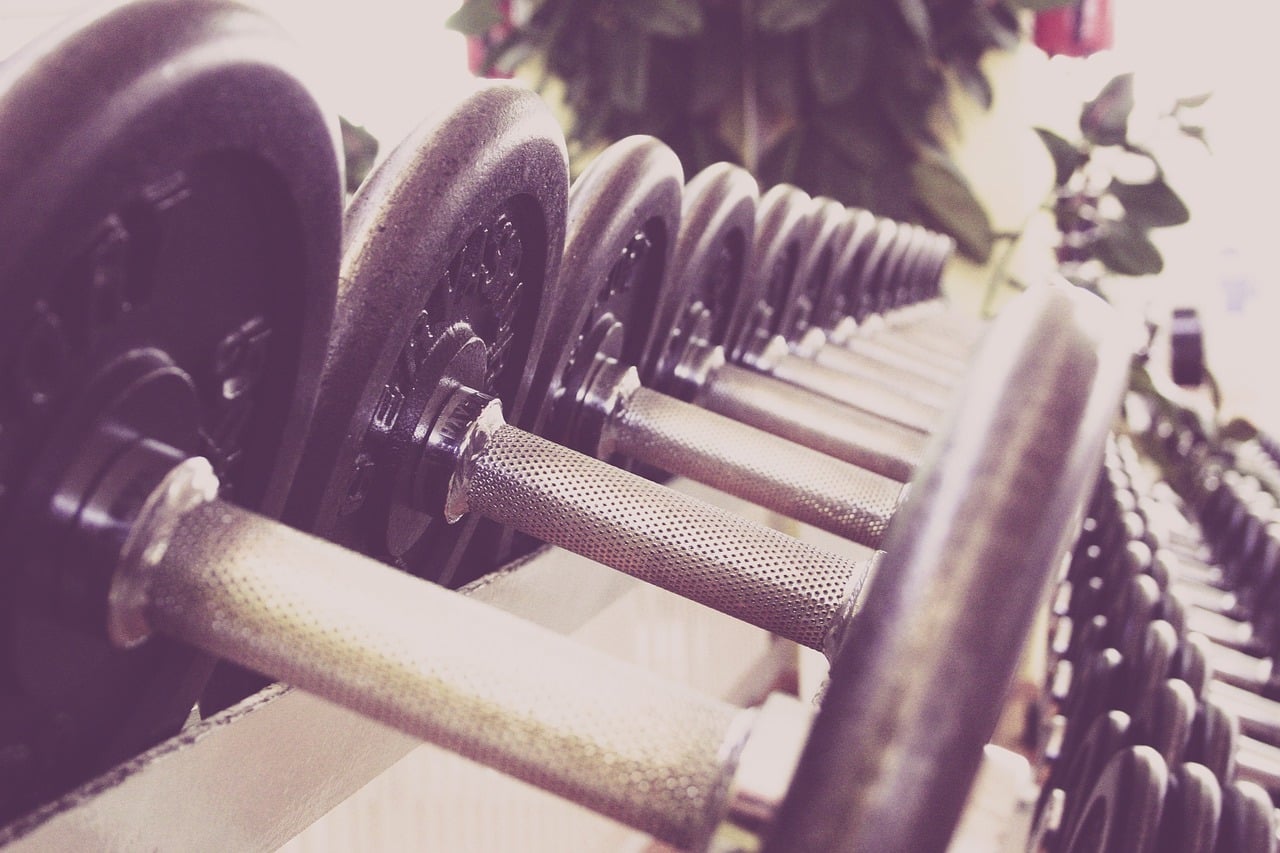If you've recently added a furry friend to your family, crate training is an essential skill to master. Crate training not only provides a safe space for your puppy to sleep at night, but it also helps with toilet training and prevents any potential destructive behavior. In this article, you will discover a handful of helpful tips and nighttime rituals that will make crate training your puppy a breeze. With these techniques, you can ensure a peaceful night's sleep for both you and your new furry companion.
Choosing the right crate
Size
When choosing a crate for your puppy, it's important to consider the size. The crate should be large enough for your puppy to stand, turn around, and lie down comfortably. However, it shouldn't be too spacious as it may encourage accidents during the night. A crate with an adjustable divider is a great option as it allows you to gradually increase the space as your puppy grows.
Material
The material of the crate is also an important consideration. Opt for a crate made of sturdy and durable materials such as metal or hard plastic. These materials are not only long-lasting but also easier to clean in case of accidents. Soft-sided crates may be more comfortable, but they are not suitable for puppies who are still learning the ropes of crate training.
Accessibility
Choose a crate that provides easy accessibility for both you and your puppy. Look for a crate with a secure latch or lock to prevent your puppy from escaping. Additionally, consider a crate with a removable top or a door that can be easily taken off to make it easier for cleaning or for your puppy to feel less confined during the training process.
Comfort
Comfort is key when it comes to crate training. Ensure the crate has a comfortable base, such as a soft blanket or a cushion. This will provide a cozy spot for your puppy to relax in. If your puppy loves to chew, avoid placing any bedding that can be easily destroyed or ingested. You want to create a comfortable and safe environment for your furry friend.
Safety
Safety should always be a top priority when selecting a crate. Make sure the crate is sturdy and well-constructed to prevent any potential injuries. Check for sharp edges or protruding parts that could harm your puppy. Additionally, avoid placing the crate near any hazards such as electrical cords or items that your puppy may chew on. A safe and secure crate will give you peace of mind while crate training your puppy.
Setting up the crate
Location
Choosing the right location for your puppy's crate is crucial. It should be placed in a quiet area of your home where there are minimal distractions. Avoid locating the crate in areas with heavy foot traffic or near sources of noise, such as the TV or dishwasher. This will help create a calm and peaceful environment for your puppy to settle down in.
Bedding
To make the crate more comfortable for your puppy, consider adding bedding. Choose bedding that is soft and machine washable, as accidents are bound to happen during the training process. Avoid using bedding that can be easily chewed or swallowed. Place a cozy blanket or cushion in the crate to create a warm and inviting sleeping area for your puppy.
Toys and chewables
To keep your puppy entertained and prevent boredom, include some toys and chewables in their crate. Choose toys that are safe and suitable for puppies, keeping in mind their size and chewing habits. Interactive toys or puzzle toys can engage your puppy's mind, providing mental stimulation during their time in the crate. However, avoid toys that may possess choking hazards or those with small parts that can be easily swallowed.
Covering the crate
Covering the crate can create a den-like atmosphere for your puppy, making them feel safe and secure. Consider draping a light blanket or using a crate cover to partially cover the crate. However, it's important to balance coverage with proper ventilation. Ensure there is enough airflow to prevent the crate from becoming stuffy or overheated. Experiment with different levels of coverage to find what works best for your puppy.

This image is property of pixabay.com.
Establishing a routine
Consistent bedtime
Consistency is key when establishing a routine for your puppy. Set a consistent bedtime, ensuring that your puppy goes into the crate at the same time each night. This predictability will help your puppy understand when it's time to settle down and sleep. Avoid adjusting the bedtime too frequently, as this can confuse your puppy and disrupt the training process.
Potty breaks
During the initial stages of crate training, it's essential to take your puppy out for regular potty breaks during the night. Puppies have small bladders and may not be able to hold their pee for extended periods. Set an alarm to wake up and take your puppy outside to a designated potty area. This will help prevent accidents in the crate and encourage proper bathroom habits.
Feeding schedule
Establishing a consistent feeding schedule is important for crate training. It's recommended to feed your puppy at least a few hours before bedtime to allow enough time for digestion. This will minimize the chances of your puppy needing to go potty during the night. Avoid feeding your puppy right before bedtime, as it can lead to an upset stomach and make crate training more challenging.
Exercise before bedtime
Providing your puppy with plenty of exercise and playtime before bedtime can help them burn off excess energy and promote relaxation. Engage in an active play session or take your puppy for a walk to tire them out. A tired puppy is more likely to settle down and sleep peacefully in their crate. However, avoid vigorous exercise immediately before bedtime, as it can increase their energy levels instead of calming them down.
Introducing the crate
Positive association
To ensure your puppy has a positive association with the crate, make it an inviting and rewarding space. Start by placing treats and toys near the crate, gradually moving them inside. Allow your puppy to explore the crate at their own pace, rewarding them with treats and praise for any positive interaction. By creating positive associations, your puppy will begin to see the crate as a safe and enjoyable place to be.
Slow and gradual
Introduce the crate to your puppy gradually to avoid overwhelming them. Start by leaving the crate door open and let your puppy freely explore it. Gradually increase the amount of time your puppy spends in the crate, starting with short intervals and gradually building up to longer durations. Patience is key during this process, as forcing your puppy into the crate can create fear and resistance.
Using treats and praise
Rewards can be a powerful tool when introducing your puppy to the crate. Use treats and praise to reinforce positive behavior and to encourage your puppy to associate the crate with positive experiences. Place treats inside the crate and praise your puppy when they enter or settle down inside. This positive reinforcement will help your puppy feel more comfortable and willing to spend time in their new den.
Soothing sounds
To further enhance your puppy's comfort in the crate, consider playing soothing sounds or music in the background. Soft classical music or gentle nature sounds can create a calming atmosphere, promoting relaxation and aiding in the crate training process. Avoid loud or stimulating noises, as they may cause your puppy to become anxious or restless.

This image is property of pixabay.com.
Creating a calm environment
Reducing noise
Minimize noise levels around the crate to create a calm environment for your puppy to sleep in. Close doors or use soundproofing materials to block out any loud noises from other parts of your home. If there are unavoidable noises, such as traffic or neighbors, consider using a white noise machine or a fan to create a consistent background noise that can help drown out any disturbances.
Dimming the lights
Dimming the lights in the room can help signal to your puppy that it's time to sleep. Lower the brightness of any overhead lights and use soft, gentle lighting or a nightlight near the crate. This will create a soothing environment and help your puppy relax and settle down for the night.
Temperature and ventilation
Ensure the room where the crate is located is at a comfortable temperature for your puppy. Avoid placing the crate near drafts or in areas that are too hot or too cold. Use appropriate bedding and adjust the room's temperature as needed to maintain a pleasant and cozy environment. Proper ventilation is also important to ensure fresh air circulates in the room and prevents stuffiness.
Minimizing disturbances
Try to minimize any disturbances that may disrupt your puppy's sleep during the night. Keep other pets away from the crate to prevent any possible distractions. If you have a family with different routines, communicate the importance of minimizing noise and disturbances during the puppy's designated sleep time. Consistency and a calm environment will help promote a better night's sleep for both you and your furry friend.
Nighttime routine
Pre-bedtime walk
Going for a short walk before bedtime can help your puppy release energy and prepare for a good night's sleep. Take your puppy outside for a brief walk or engaging play session to tire them out. A tired puppy is more likely to settle down and sleep soundly in their crate.
Potty break
Before placing your puppy in the crate for the night, make sure to take them outside for a final potty break. This will give them the opportunity to relieve themselves and minimize the chances of accidents during the night. Be patient and wait until your puppy has finished doing their business before bringing them back inside for bedtime.
Quiet time
Create a quiet and calm environment in the hour leading up to bedtime. Avoid engaging in vigorous play or stimulating activities that can rev up your puppy's energy levels. Instead, focus on providing relaxation and winding down time. Gentle belly rubs or a calm grooming session can help signal to your puppy that it's time to settle down.
Comforting cues
Establish comforting cues to help your puppy feel secure and relaxed in their crate. This can include a special blanket or toy that they associate with comfort and sleep. Placing a shirt or pillow with your scent near the crate can also provide a sense of familiarity and help soothe your puppy during the night. These cues will provide reassurance and help your puppy settle down for a peaceful sleep.

This image is property of pixabay.com.
Dealing with crying and whining
Ignoring attention-seeking behavior
During crate training, it's common for puppies to cry and whine initially. It's important to differentiate between attention-seeking behavior and genuine distress. If your puppy is only whining to get your attention, it's crucial to resist the urge to give in. Ignoring the whining will teach your puppy that whining does not result in attention, ultimately helping them settle down faster.
Gradual response
Instead of immediately attending to your puppy's cries, try a gradual response approach. Wait for a short period of silence before giving any attention or letting your puppy out of the crate. This teaches them that quiet behavior is rewarded, while excessive crying or whining is ignored. Gradually increase the time between responses, encouraging your puppy to become more independent and self-soothing.
Distraction techniques
Provide your puppy with appropriate distractions to redirect their attention and help calm them down. Offer chew toys or interactive puzzles to keep them occupied and focused on something other than the desire to be let out of the crate. Engaging their minds with stimulating activities during crate time can help alleviate anxiety and reduce unwanted crying or whining.
Avoid punishment
It's important to never punish your puppy for crying or whining in their crate. Punishment can lead to increased anxiety and make the crate a negative and fearful place for your puppy. Instead, focus on positive reinforcement and reward your puppy for calm behavior. Over time, with patience and consistency, your puppy will learn to associate the crate with positive experiences and become more comfortable in it.
Avoiding accidents in the crate
Proper crate sizing
Ensuring the crate is the appropriate size for your puppy is crucial in preventing accidents. A crate that is too large gives your puppy a greater area to relieve themselves without disturbing their sleeping area. Opt for a crate that allows enough space for your puppy to stand up, turn around, and lie down comfortably, but not much more.
Potty breaks during the night
Until your puppy is fully house-trained, nighttime potty breaks are essential to avoid accidents in the crate. Set an alarm and take your puppy outside for a short potty break during the night. Keep the lights low and avoid stimulating play or interaction to encourage your puppy to focus on their bathroom needs. Be patient and consistent with these breaks, gradually reducing them as your puppy becomes more house-trained.
Monitoring water intake
Controlling your puppy's water intake before bedtime can help minimize the need for nighttime potty breaks. Offer water earlier in the evening, ensuring there is still time for your puppy to go potty before settling down for the night. However, it's important to balance hydration with the puppy's needs, so consult with your veterinarian for specific guidelines based on your puppy's age and individual requirements.
Establishing bathroom cues
Teaching your puppy specific bathroom cues can be helpful during crate training. Use a consistent command or word, such as "go potty," when taking your puppy outside for bathroom breaks. Over time, your puppy will learn to associate the cue with the act of going potty and it can help them understand their bathroom routine more easily.
Handling anxiety or fear
Gradual exposure to the crate
If your puppy shows signs of anxiety or fear towards the crate, it's important to take a gradual approach. Start by leaving the crate door open and allow your puppy to explore it at their own pace without any pressure. Gradually increase exposure to the crate, pairing it with positive experiences and rewards. Take small steps and be patient, understanding that every puppy adjusts to crate training at their own pace.
Comfort items
Including comfort items in the crate can help reduce anxiety and fear. Place a familiar blanket or stuffed toy with your scent inside the crate to provide a sense of security and familiarity for your puppy. These items can act as a source of comfort and reassurance, making the crate a more inviting and calming space.
Calming pheromones
Consider using pheromone products designed to calm and relax your puppy. Synthetic pheromones, like those found in Adaptil, mimic the natural pheromones produced by mother dogs and can have a soothing effect on puppies. These products come in various forms, such as sprays or diffusers, and can help alleviate anxiety or fear during crate training.
Building trust and confidence
Building trust and confidence is crucial when crate training a puppy. Take time to bond and establish a positive relationship with your puppy outside of the crate. Engage in positive training sessions, reward good behavior, and provide plenty of love and attention. By building trust and strengthening your bond, your puppy will feel more secure and comfortable in their crate.
Reinforcing positive behavior
Rewarding calm behavior
Rewarding your puppy for calm behavior in the crate is essential for reinforcing positive habits. When your puppy settles down calmly in the crate, praise them and provide treats as a reward. Positive reinforcement will help your puppy associate the crate with positive experiences, making it more likely for them to willingly enter and relax in the crate.
Using verbal cues
Verbal cues can be a valuable tool when crate training your puppy. Introduce a specific command or phrase, such as "crate time" or "bedtime," to signal to your puppy that it's time to enter the crate. Consistently using these verbal cues will help your puppy understand the desired behavior and make crate training more efficient.
Clicker training
Clicker training can be an effective method to reinforce positive crate behavior. By using a clicker, you can mark the exact moment your puppy exhibits the desired behavior, such as entering the crate or lying down calmly inside. Pair the clicker sound with treats or praise, creating a positive association. Clicker training can help your puppy understand the specific behaviors you want to reinforce and expedite the crate training process.
Consistency and patience
Consistency and patience are key when reinforcing positive behavior in crate training. Stick to a routine and provide clear expectations and rewards for your puppy. Remember that every puppy is unique, and the rate at which they learn and adjust to the crate may vary. Stay consistent in your training methods and be patient with your puppy as they navigate this new experience.
In conclusion, crate training a puppy at night can be a challenging but rewarding experience. By choosing the right crate, setting up a comfortable environment, establishing a routine, and introducing the crate gradually, you can create a positive association and help your puppy feel safe and secure. Minimizing disturbances, handling crying and whining with care, and preventing accidents in the crate are all important aspects of successful crate training. By addressing anxiety or fear, reinforcing positive behavior, and being consistent and patient throughout the process, you can help your puppy become crate trained and develop healthy sleep habits. Remember, crate training is a gradual process that requires time, attention, and love, but the benefits of a well-trained puppy will be worth the effort in the long run.


